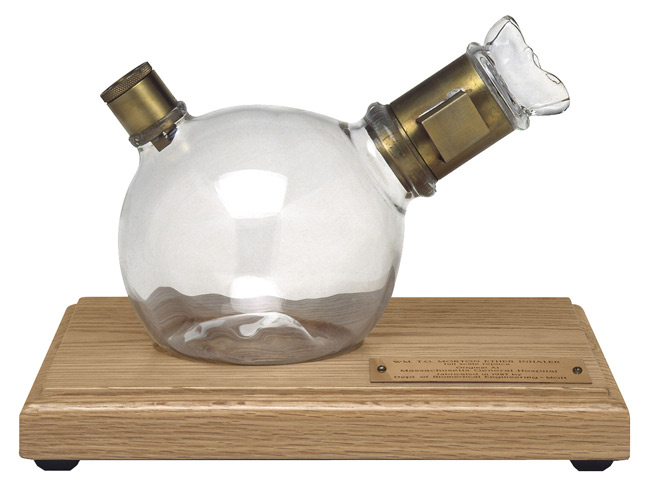The Many Mysteries of Anesthesia

Anesthesia helps many of us during our lives, whether we need a local painkiller at the dentist, numbing eye drops for laser vision correction or general anesthesia for major surgery. But even though anesthetics have been used in many procedures for more than 150 years, doctors and scientists still don't know exactly how these medicines work in the body.
Finding a safe way to go under
Before anesthesia, doctors and dentists operated on patients only in extreme circumstances and largely without the use of painkillers or sedatives.
Then, in 1846, dentist William T. G. Morton demonstrated the use of ether to put patients "to sleep" during surgery. The practice soon spread, but because doctors couldn't control the amount of ether inhaled, patients could wake up during surgery—or never wake again. Ether was also highly flammable.
The next few decades saw the introduction of less flammable anesthetic gases as well as the discovery of intravenous anesthetics with controllable dosage. Still, well into the 1950s, dangerous side effects were common and included heart rhythm abnormalities, breathing problems, lowered blood pressure, nausea and vomiting.
Modern anesthetic techniques allow millions of Americans to safely undergo surgery with fewer and less serious side effects. New inhaled and intravenous general anesthetics act quickly and dissipate rapidly when stopped, while local and regional anesthetics that block specific nerves provide an alternative to general anesthesia.
Researchers funded by the National Institutes of Health have helped identify and explore several components of general anesthesia—including sedation, unconsciousness, immobility, analgesia (lack of pain) and amnesia (lack of memory). And they have developed medicines that can provide one or more elements separately, allowing anesthesiologists to tailor painkiller regimens to individual procedures and patients.
Sign up for the Live Science daily newsletter now
Get the world’s most fascinating discoveries delivered straight to your inbox.
An anesthesiologist's job isn't easy
Since anesthesia can still cause complications and have body-wide effects, anesthesiologists carefully monitor patients throughout surgery using a variety of devices that display blood pressure, blood oxygen levels, heart function and respiration. They adjust medications throughout the procedure to make sure each patient remains safe.
Anesthesiologists' jobs have expanded beyond the operating room as well, including caring for patients as they recover from surgery, and providing anesthesia for nonsurgical procedures, such as colonoscopy and childbirth. They also advise other specialists on how to manage pain.
"I think it is fair to say that most people have no idea how complex our jobs are and how attentive we must be," says Daniel Kohane, an anesthesiologist at Harvard Medical School and Children's Hospital Boston.
The Future of Anesthesiology
Advances in cell biology, genetics and molecular biology have spurred scientists to learn more about anesthesia and develop better anesthetics.
For instance, Max B. Kelz at the University of Pennsylvania found that the processes of going under and waking up from anesthesia are different. Knowing more about how the brain transitions between conscious and unconscious states could improve our understanding of sleep disorders and states of impaired consciousness such as comas. Daniel Sessler at the University of Louisville School of Medicine found that red-haired women need 20 percent more anesthetic than dark-haired women, and he may have pinpointed a genetic variant that explains why. And Kohane created a slow-release anesthetic that lasted several days in rats and didn't cause nerve damage or other side effects in the animals. This could be a step on the path to improved treatment for chronic pain.
The researchers' ultimate goal is to design anesthetics that are more targeted within the body and personalized to work safely and effectively in each patient. Plus, research into anesthesia could reveal more about pain, memory, conditions such as epilepsy and coma, and the nature of consciousness itself.
Learn more:
This Inside Life Science article was provided to LiveScience in cooperation with the National Institute of General Medical Sciences, part of the National Institutes of Health.










